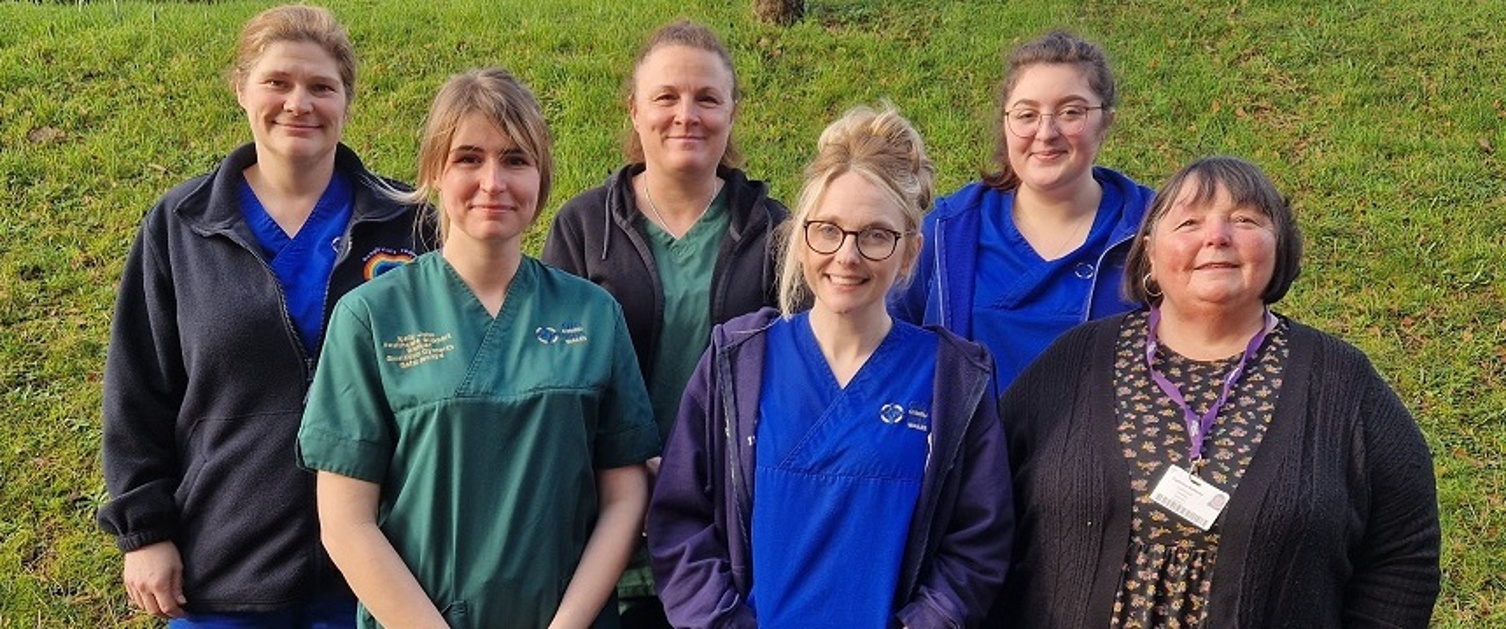Home service success for respiratory team

A Swansea Bay respiratory team has taken on board the old adage that ‘out of adversity comes opportunity’ through continuing to treat patients at home rather than in hospital.
Amidst the height of the pandemic, when our hospitals were filling up with Covid patients, the team developed a ‘Start and Support’ initiative, which saw respiratory failure patients receive non-invasive ventilation at home - where previously they would have been admitted to a ward - thus lessening hospital pressures and reducing the risks to patients.
Non-invasive ventilation refers to the administration of ventilator support without using an invasive artificial airway such as an endotracheal or tracheostomy tube – the latter patients still need to go to hospital.
Such was its effectiveness the practice is now standard procedure, resulting in far fewer hospital admissions at a time when beds are at a premium.
The move earned the team the Always Improving Award in Swansea Bay’s 2022 Living Our Values Awards.
Respiratory nurse specialist, Kirsty Eastwood (pictured left on the right with colleague Kelly Johns), said: “We had to discover a different model of care for these patients. We devised an initiative where we were able to safely commence this therapy in the patient's home using a start and support model of care.
“There was no requirement to come to hospital as a day case and these patients could still receive this essential therapy in a time where things felt so uncertain for these group of vulnerable patients.”
Members of the team carefully monitor the patients in their homes and provide ongoing support.
Kirsty said: “Moving forward it became clear that these patients needed intensive support, so part of this model included daily phone calls and home visits to carry out blood tests for oxygen and carbon dioxide levels from our respiratory technician and CNS team. This ensured that these individuals felt comfortable with their therapy and that the therapy was effective.
“This new model meant that patients were receiving a more intensive standard of care and support in a period where they were extremely anxious due to the pandemic.
“They felt relieved that they did not need to enter the hospital during a pandemic and this has obviously lessened pressures on the organisation during a difficult time.”
Kirsty said that the patient’s welfare was at the centre of the changes.
She said: “Commencing this therapy at home has placed the patient at the centre of care. We empathised with their real-life fears and anxieties about coming into hospital during a pandemic and responded by changing the way we delivered this service.
“We identified that this area was in need of change. This new model enhances communication, emotional support, smooth access to care and empowerment for patients in their own environment.”
Kelly John, a respiratory technician, said: “Our patients are extremely grateful when we go out to see them. Most of them are housebound and unwell and struggle to get out so it makes a difference to their lives.”
Alison Lewis, respiratory clinical lead, said: “I am extremely proud to work with a team that provides such a high standard of patient care despite facing many challenges currently.
“They always make patients the priority and do everything possible to support them and help them improve their quality of life. They are innovative and always strive for excellence.”
Pic caption: The respiratory team. Left to right: Michelle Davies (respiratory clinical nurse specialist), Kelly John and Claire Grey (respiratory technicians), Valentina Parisi (respiratory specialist nurse), Catherine Bellamy (administration).
Not pictured Linzi Johnstone (respiratory specialist nurse).
Rydym yn croesawu gohebiaeth a galwadau ffôn yn y Gymraeg neu'r Saesneg. Atebir gohebiaeth Gymraeg yn y Gymraeg, ac ni fydd hyn yn arwain at oedi. Mae’r dudalen hon ar gael yn Gymraeg drwy bwyso’r botwm ar y dde ar frig y dudalen.
We welcome correspondence and telephone calls in Welsh or English. Welsh language correspondence will be replied to in Welsh, and this will not lead to a delay. This page is available in Welsh by clicking ‘Cymraeg’ at the top right of this page.